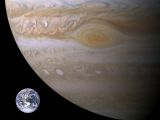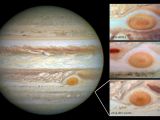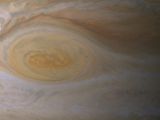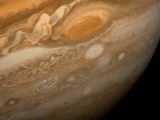Earlier this week, researchers with the US National Aeronautics and Space Administration (NASA) announced that, having carried out a series of laboratory experiments, they found that Jupiter's Great Red Spot was no more and no less than a ginormous sunburn.
As noticeable in the images included in the gallery below, the spot is located below Jupiter's equator. It rotates anticlockwise and is oval-shaped. Researchers who have had the chance to examine it say that it's about the size of two Earths.
How Jupiter got its Great Red Spot
In a statement, researchers with NASA explain that, for quite a while, it was believed that Jupiter's Great Red Spot was birthed by reddish chemical compounds originating from the planet's clouds. However, recent experiments contradict this theory.
Thus, NASA scientists say that, having exposed ammonia and acetylene gases, both of which have previously been documented on Jupiter, to ultraviolet light, they ended up obtaining a reddish material.
They go on to argue that this material that they obtained in laboratory conditions had the same light-scattering properties as the material forming Jupiter's Great Red Spot does. Hence, they explain that the spot is basically a cosmic sunburn.
More precisely, it is now argued that the Great Red Spot present on this planet was birthed by chemicals that were broken down by sunlight reaching the planet's upper atmosphere. This means that, beneath the surface, the spot might not be all that red, after all.
“Our models suggest most of the Great Red Spot is actually pretty bland in color, beneath the upper cloud layer of reddish material,” astronomer Kevin Baines said in a statement. “Under the reddish 'sunburn' the clouds are probably whitish or grayish,” he added.
Before settling on ammonia and acetylene gases as the compounds responsible for the formation of Jupiter's Great Red Spot, scientists also experimented with ammonium hydrosulfide. When exposed to ultraviolet light, this compound produced a gorgeous shade of green.
Jupiter has a unique anatomy
Data obtained during previous investigations indicates that the Jupiter is chiefly made up of hydrogen and helium. Still, several other compounds have also been documented on this planet over the years.
Specifically, the planet is said to pack three main layers of clouds. These cloud layers hover over Jupiter at different altitudes, depending on their makeup. Thus, the highest of the bunch is an ammonia layer and the lowest comprises water clouds. Nestled between is an ammonium hydrosulfide layer.
Scientists who have taken the time to study this planet believe that it is precisely because its makeup includes a whole lot of chemical compounds that respond differently to sunlight that Jupiter appears colored in shades of orange, brown and even red.
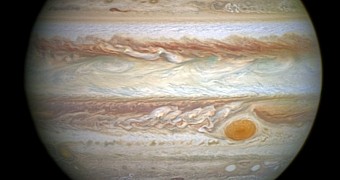
 14 DAY TRIAL //
14 DAY TRIAL // 
